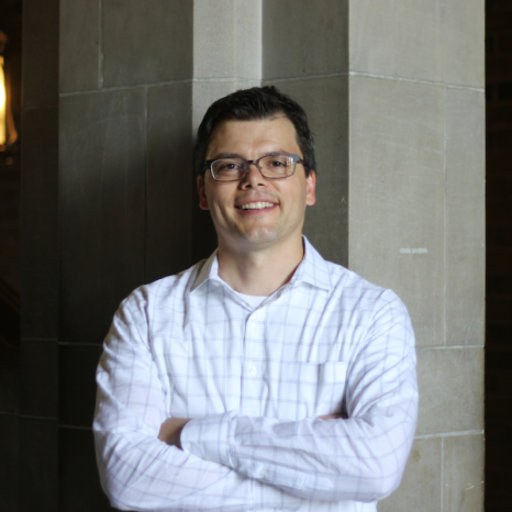| Line 63: | Line 63: | ||
</tr> | </tr> | ||
<tr> | <tr> | ||
| − | <td colspan = | + | <td colspan = 4 align="left"> |
<p class="introduction"> | <p class="introduction"> | ||
| − | + | For our Integrated Human Practices, we decided to contact three specialists whose work was related to the area of diagnostics or synthetic biology to get feedback from experts to develop CascAID. | |
| − | + | <p> | |
| − | + | In the early phases of our project, we found a study from Dr. Keith Pardee about a diagnostic platform that used biomolecular sensors and a CRISPR/Cas9-based technology for rapid, specific, and low-cost detection of the Zika virus (Pardee, 2016). We took inspiration from this study together with others to develop CascAID. That is why, we decided to reach him, and he accepted to do an interview via Skype with us. He was impressed with our ambitious project and we received very useful feedback. One of his suggestions, was that we tried to make our device as easy as possible in the beginning and then get to the next level of complexity. For that reason, he suggested us to first use purified RNA that mimicked our target at high concentrations, instead of considering using human samples. At the beginning of our project, we intended to use human saliva samples spiked with known concentrations of viral and bacterial RNA. However, after Dr. Pardee´s recommendation, we opted to first detect the 16S ribosomal subunit from Escherichia coli from purified total RNA and in vitro RNA. | |
| − | </ | + | </p> |
| − | + | <p> | |
| + | When we asked him about our readout ideas (fluorescence and colorimetric), he told us that the fluorescent readout would be enough to prove that our device worked. Also, he recommended us to implement trehalose as a cryoprotectant in our method to lyophilize Cas13a into our paperstrip. Since this carbohydrate is present in tardigrades, we immediately though on contacting Team TU Delft for collaboration, since they were working on a similar project and using tardigrade proteins. The collaboration proved to be successful and we characterized a Tardigrade intrinsically Disordered Proteins (TDPs) they sent us. | ||
| + | </p> | ||
| − | |||
| − | |||
| − | |||
| − | |||
| − | |||
| − | |||
| − | |||
| − | |||
| − | |||
| − | |||
| − | |||
| − | |||
| − | |||
<p> | <p> | ||
| − | <h3><a class="myLink" href="/Team:Munich/Gold_Integrated/KeithPardee">Read part of the interview | + | <h3><a class="myLink" href="/Team:Munich/Gold_Integrated/KeithPardee">Read part of the interview with Dr. Pardee here…</a></h3> |
</p> | </p> | ||
| − | + | ||
<td colspan=2 align=center valign=center> | <td colspan=2 align=center valign=center> | ||
<img src="https://i1.rgstatic.net/ii/profile.image/AS%3A411862849081350%401475207163702_xl/Keith_Pardee.png" alt="Keith Pardee"> | <img src="https://i1.rgstatic.net/ii/profile.image/AS%3A411862849081350%401475207163702_xl/Keith_Pardee.png" alt="Keith Pardee"> | ||
| Line 93: | Line 82: | ||
</tr> | </tr> | ||
| − | + | We also had the opportunity to talk with Dr. Sabine Dittrich, who is heading the fever work in FIND´s fever, AMR and Outbreak programme. Since her general field of work as well as her personal interest is improving detection of bacterial pathogens both in human and environmental samples, we were excited to ask for her opinion on our project. She gave us advice on which pathogens should our device prototype target, and she mentioned that respiratory pathogens are particularly important when it comes to overprescribing antibiotics. She also mentioned as Dr. Pardee did, that it is very important to keep our device as simple as possible and that it would be ideal if it could be stored at room temperature. In that regard, our lyophilized Cas13a on a paperstrip would fulfill that criteria. | |
| − | + | ||
| − | + | ||
| − | + | ||
<p> | <p> | ||
| − | <h3><a class="myLink" href="/Team:Munich/Gold_Integrated/Dittrich">Read part of the interview | + | <h3><a class="myLink" href="/Team:Munich/Gold_Integrated/Dittrich">Read part of the interview with Dr. Dittrich here…</a></h3> |
</p> | </p> | ||
| − | |||
| − | |||
| − | |||
| − | |||
| − | |||
| − | + | ||
| − | + | Prof. Joyce Tait, from the University of Edinburgh and director of the Innogen Institute (UK), also conceded us an interview. She told us that for fighting against the increasing problem of antibiotic resistance, it was very important to have devices for point-of-care diagnosis that people could use at home for testing themselves or for farmers to test their animals for specific pathogens. Then, our device would be ideal for these applications. | |
| − | + | ||
| − | + | ||
<p> | <p> | ||
| − | <h3><a class="myLink" href="/Team:Munich/Gold_Integrated/Tait">Read part of the interview | + | <h3><a class="myLink" href="/Team:Munich/Gold_Integrated/Tait">Read part of the interview with Prof. Tait here…</a></h3> |
</p> | </p> | ||
| − | </ | + | </p> |
| − | + | </td> | |
| − | + | ||
| − | </td> | + | |
</tr> | </tr> | ||
| + | |||
Revision as of 16:28, 29 October 2017
| |||||||||||||||||||||||||||||||||||||||||||||
| |||||||||||||||||||||||||||||||||||||||||||||



